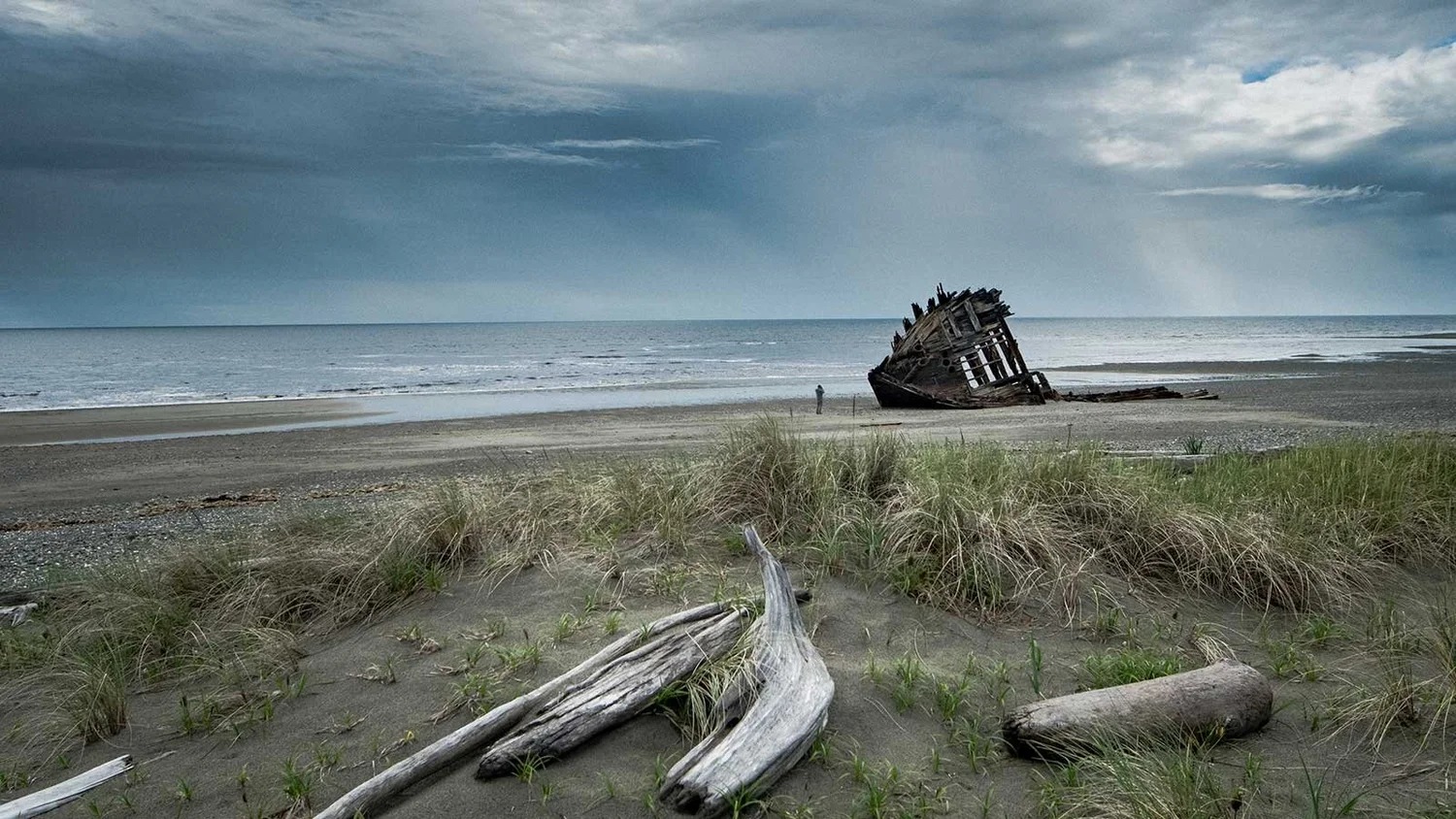Camping on Haida Gwaii isn’t just about pitching a tent—it’s about feeling like you’ve stepped into another world. Located off the northwest coast of British Columbia, this remote group of islands is where moss-covered forests meet driftwood-strewn beaches, and where stories from the Haida Nation are woven into every corner of the land. Whether you’re sleeping under the stars or waking up to the sound of waves, Haida Gwaii has a kind of quiet that stays with you.
These islands are a haven for campers who love solitude, wild scenery, and the feeling of being completely off-grid. There are no big cities here, just a scattering of small communities and endless nature. You can drive long stretches of highway without seeing another soul, and then find yourself sharing the beach with a curious seal or spotting eagles overhead. It’s the kind of place where you slow down without even trying.
Camping here gives you front-row access to some of BC’s most unique experiences. You can hike to ancient totem poles, kayak past sea lions, or forage for wild berries just steps from your site. One night might mean a campfire on a windblown spit, the next a mossy forest campsite deep in Gwaii Haanas. The mix of rugged beauty and cultural history makes every stop feel meaningful.
But this isn’t the kind of trip you wing at the last minute. With unpredictable weather, limited services, and remote locations, it helps to plan ahead. In this guide, I’ll walk you through the best places to camp on Haida Gwaii, what to do while you’re there, and how to make the most of your adventure without wrecking your gear—or your mood.
Top Locations for Haida Gwaii Camping
Gwaii Haanas National Park Reserve
Camping in Gwaii Haanas is a raw, off-grid experience meant for those who are fully self-sufficient. There are no designated campgrounds or marked sites—just a collection of coastal areas where you’re allowed to set up your tent. You’ll need to bring everything in and pack everything out, including drinking water, food, and waste. Composting toilets exist at some cultural sites, but outside of that, you’re on your own.
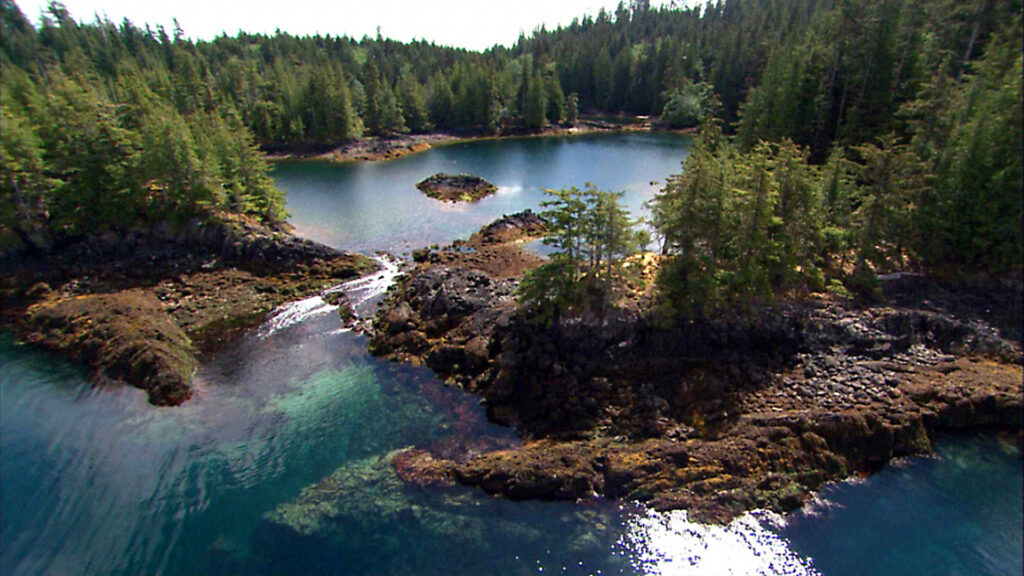
The magic of camping here comes from the quiet. One night you might be camped on a rocky beach, the next under towering spruce trees in a moss-covered clearing. The mornings are usually misty, the beaches empty except for driftwood and eagle tracks. These lands are part of the Haida Nation, and many sites are watched over by Haida guardians. Access typically involves boating or kayaking, and permits plus an orientation are required. It’s a place for experienced campers who want solitude and cultural depth—not amenities.
Tow Hill Provincial Park
Tow Hill is one of the few places on Haida Gwaii where you’ll find semi-developed campsites with basic comforts. Agate Beach Campground sits just outside the trail entrance, offering tent and vehicle-accessible sites with pit toilets, picnic tables, and ocean views. It’s first-come, first-served and fills up quickly in the summer, especially with its easy access to North Beach.

The trail up Tow Hill itself is well-maintained and offers sweeping views of the ocean and coastline below. The area is windy, especially near the beach, so it’s wise to bring solid tent stakes and a windbreak if you can. Even though it’s one of the more accessible campgrounds, it still feels remote. There’s no cell service and the nearest store is a decent drive away, so stock up before you arrive.
Naikoon Provincial Park (Sandspit Area)
Naikoon is one of the most diverse and spread-out parks on the islands, offering forest, bog, dune, and beach camping. Two main campgrounds—Misty Meadows and Agate Beach—provide pit toilets, seasonal water, and picnic shelters. These sites are relatively easy to access by car and make a good base for first-time visitors to Haida Gwaii.

Beyond the main campgrounds, there are many backcountry options for hikers. The East Beach Trail is a multi-day route where you’ll need to carry everything on your back and be prepared to camp wild. For something more laid-back, try Greenbanks (S’G̱aes), which is known for being quieter and more removed. Whether you’re setting up just steps from the surf or deep in the woods, Naikoon gives you the freedom to pick your perfect camping vibe.
Rose Spit Recreation Site
Camping at Rose Spit is about as remote as it gets. The narrow gravel spit extends into the ocean from the northeastern tip of Graham Island, and while there are no official campgrounds, backcountry camping is allowed. You’ll need to hike in with all your gear, and there are no facilities—no toilets, no water, nothing but wind, sea, and space.
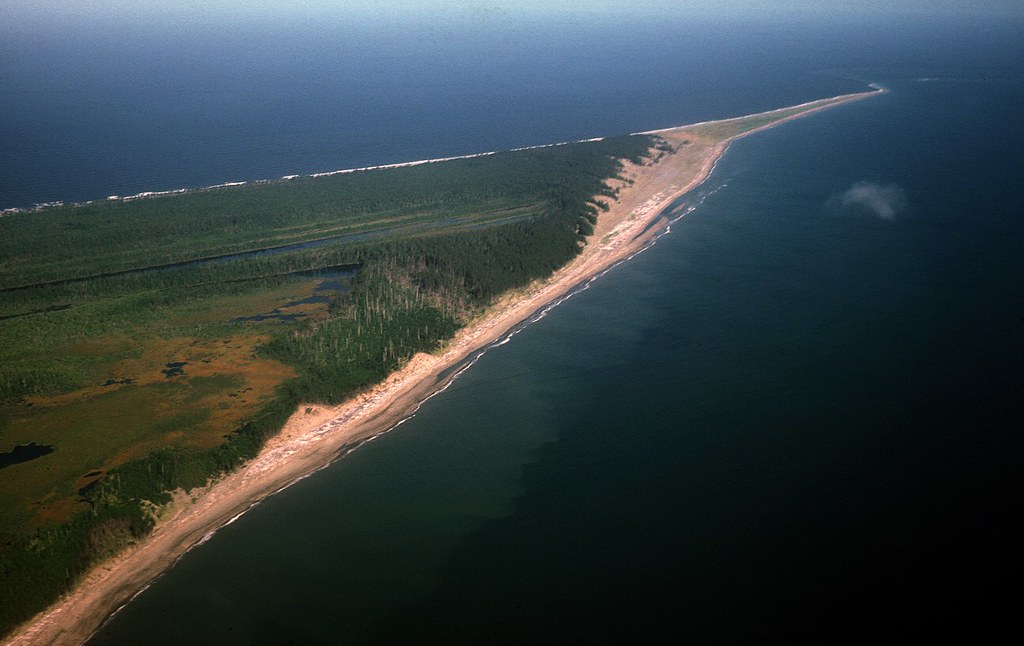
The hike out to Rose Spit is long and can be grueling in wet or windy conditions, so most people camp along the way, using driftwood as shelter and cooking on portable stoves. The payoff is worth it: watching the sun set over the water with seals popping their heads above the waves and shorebirds all around. It’s not an easy trip, but for those who make it, it’s unforgettable.
Things to do when Haida Gwaii Camping
Beachcombing & Tide Pooling
The long, driftwood-strewn beaches of Haida Gwaii are a dream for anyone who enjoys slow, mindful exploration. Agate Beach near Tow Hill is especially known for—you guessed it—agate stones. After a storm, you’ll often find new ones scattered across the sand, smooth and glinting in the light. North Beach, stretching west from Tow Hill, is also a great spot for collecting beach glass, shell fragments, and the occasional piece of polished driftwood shaped by time and tide.
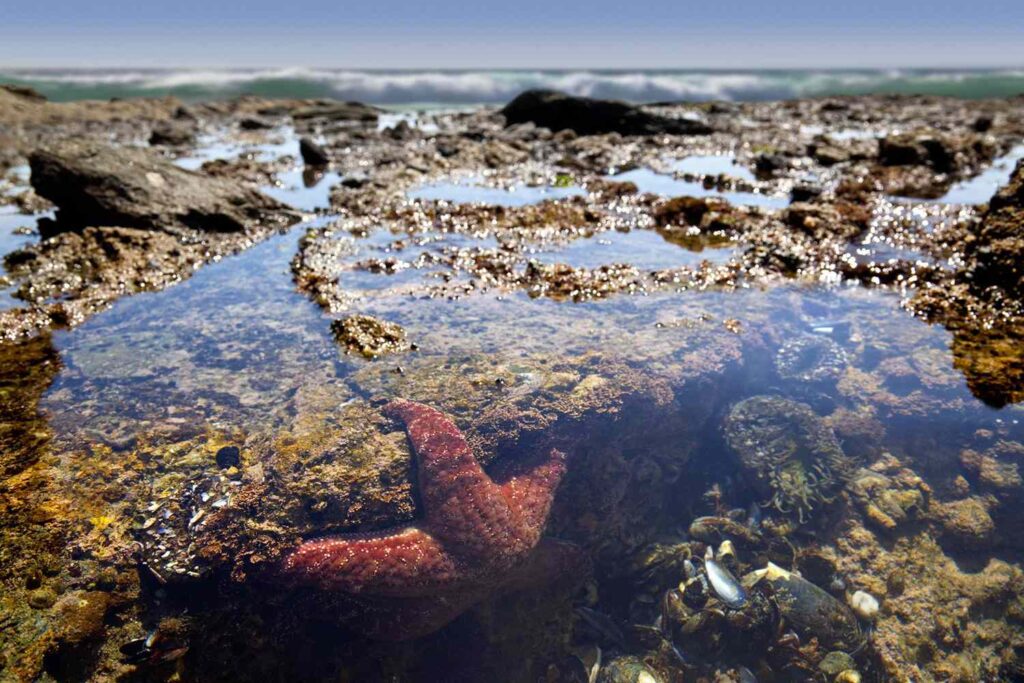
For tide pooling, head to the rocky shorelines near Tlell or the area around Jungle Beach on the east coast. Low tide reveals a mini underwater world: bright green sea anemones, purple starfish clinging to rocks, tiny crabs scurrying under kelp. Bring sandals with good grip—these rocks are slippery—and a bucket if you want to observe critters up close before gently returning them.
Sea Kayaking & Wildlife Spotting
Paddling the waters around Haida Gwaii is one of the best ways to see the islands’ raw beauty up close. Launch from the calm beaches of Moresby Island or near Skidegate for relatively easy routes, or go bigger by kayaking into the protected inlets of Gwaii Haanas. Here, the water is so still in places that you can see straight down to the sea floor. The scenery—forested cliffs, sea stacks, and hidden coves—is stunning, but it’s the wildlife that steals the show.
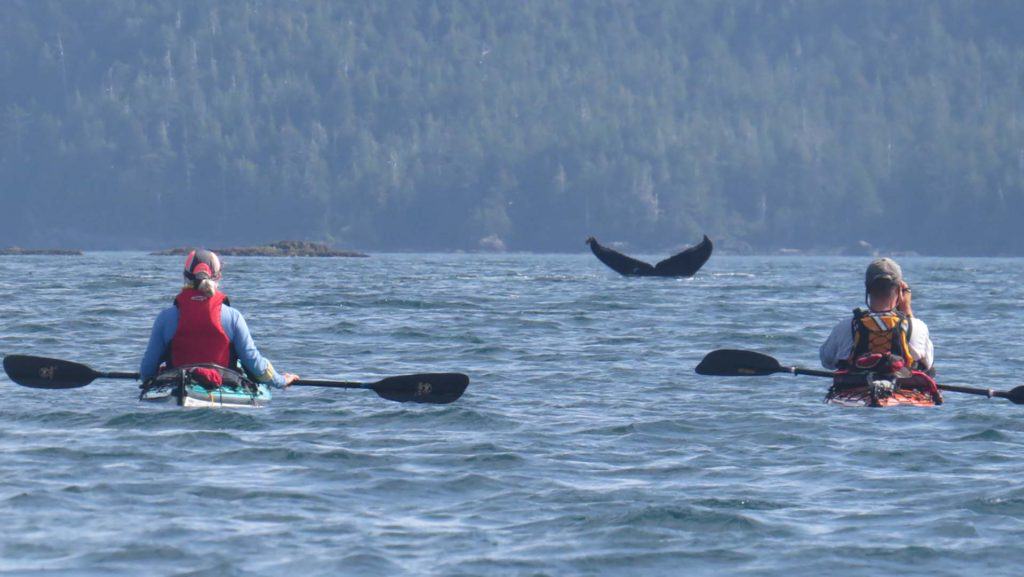
It’s not uncommon to see humpback whales breaching in the distance, or to hear them exhale nearby as they surface. Sea lions haul out on remote rocks, and harbor seals often follow silently behind paddlers out of curiosity. Bald eagles perch in high trees, and black bears can sometimes be spotted on shoreline trails. Always keep a respectful distance and pack binoculars for a better view without disturbing them.
Exploring Haida Cultural Sites
The cultural depth of Haida Gwaii is one of its most moving aspects, and many of the most powerful sites are close to popular camping areas. Near Skidegate, the Haida Heritage Centre offers a strong introduction to Haida traditions, artwork, and stories. It’s worth a visit before heading deeper into the wild, as it gives context to what you’ll see elsewhere.
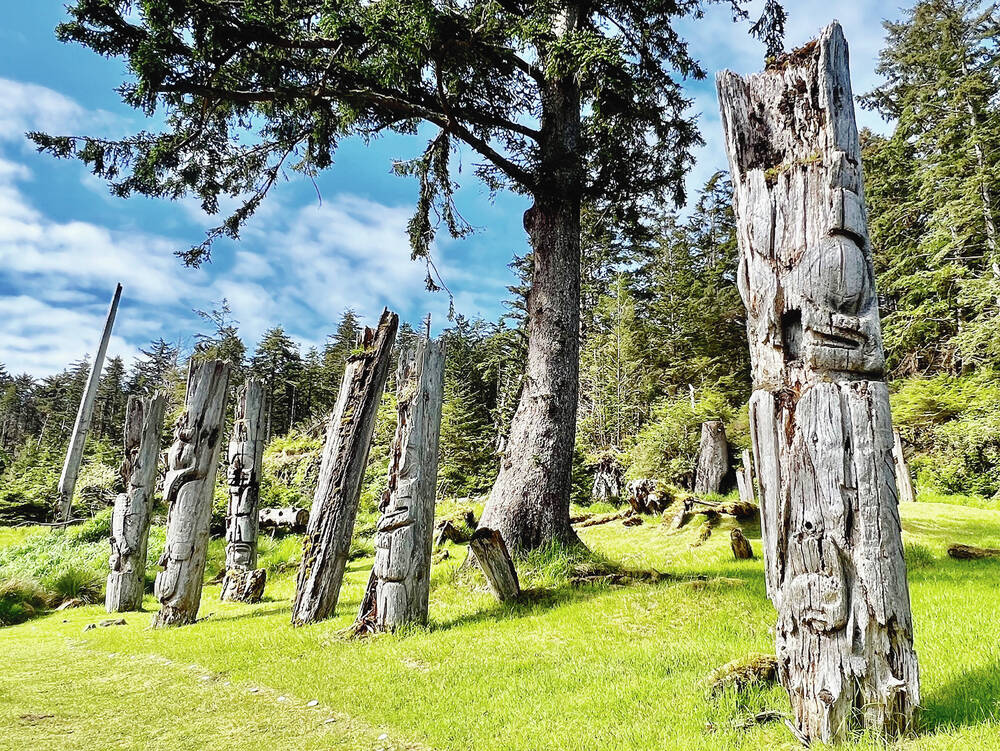
On the southern end, Gwaii Haanas is dotted with village remains and carved poles, many of which are accessible only by boat. Sites like S’Gang Gwaay (Anthony Island) are UNESCO World Heritage sites, with old totem poles still standing in quiet reverence among the moss and trees. In northern Graham Island, keep an eye out for smaller totem sites near Masset or visit Hiellen Village near Tow Hill. These are not tourist attractions—they’re sacred places. Approach them with care, curiosity, and respect.
Hiking Adventures
Trails across the islands cater to every type of hiker, from beach wanderers to forest trekkers. The Tow Hill Trail is the most iconic: a short, boardwalked climb that rewards with sweeping ocean views. Nearby, the Blow Hole Trail offers a flat coastal stroll with dramatic wave action at high tide. In Naikoon, the Pesuta Shipwreck Trail is a popular moderate hike leading to the remains of a wrecked log barge, half-buried in the sand.
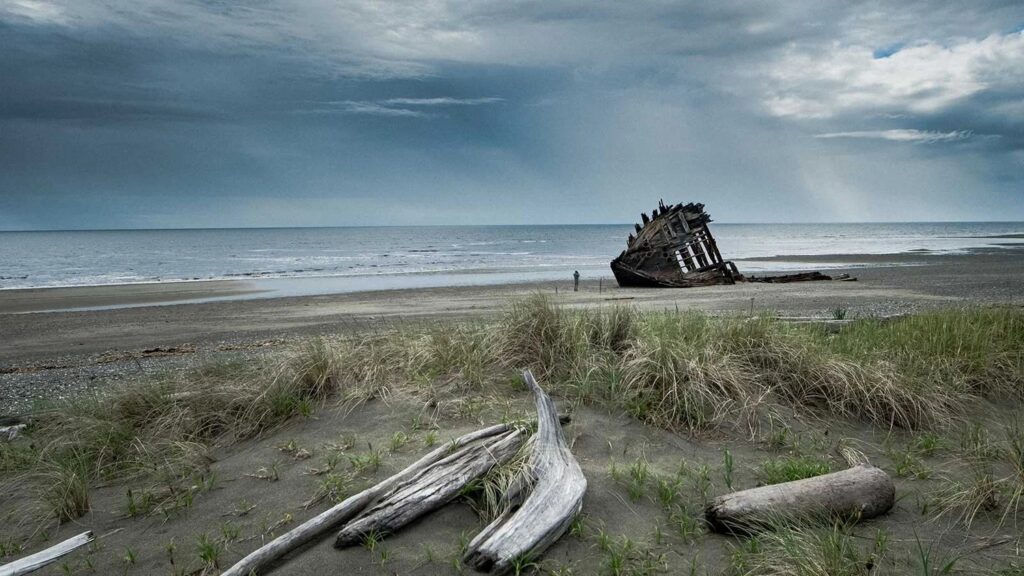
For serious backcountry hikers, the East Beach Trail is a 90 km challenge that runs from Tlell to Rose Spit. You’ll need to be prepared for multiple days of walking on soft sand, navigating tide schedules, and camping without amenities—but the views are wild and ever-changing. If you’re near Sandspit, try the Dixon Entrance Trail or Gray Bay for easier coastal routes with great picnic and camping spots.
Fishing and Foraging
Fishing is a way of life in Haida Gwaii, and there are plenty of spots to try your luck from shore or kayak. Chinook, coho, and sockeye salmon are common catches, along with halibut if you’re going offshore. Some areas require a tidal waters license, and others have restrictions—so double-check before casting.
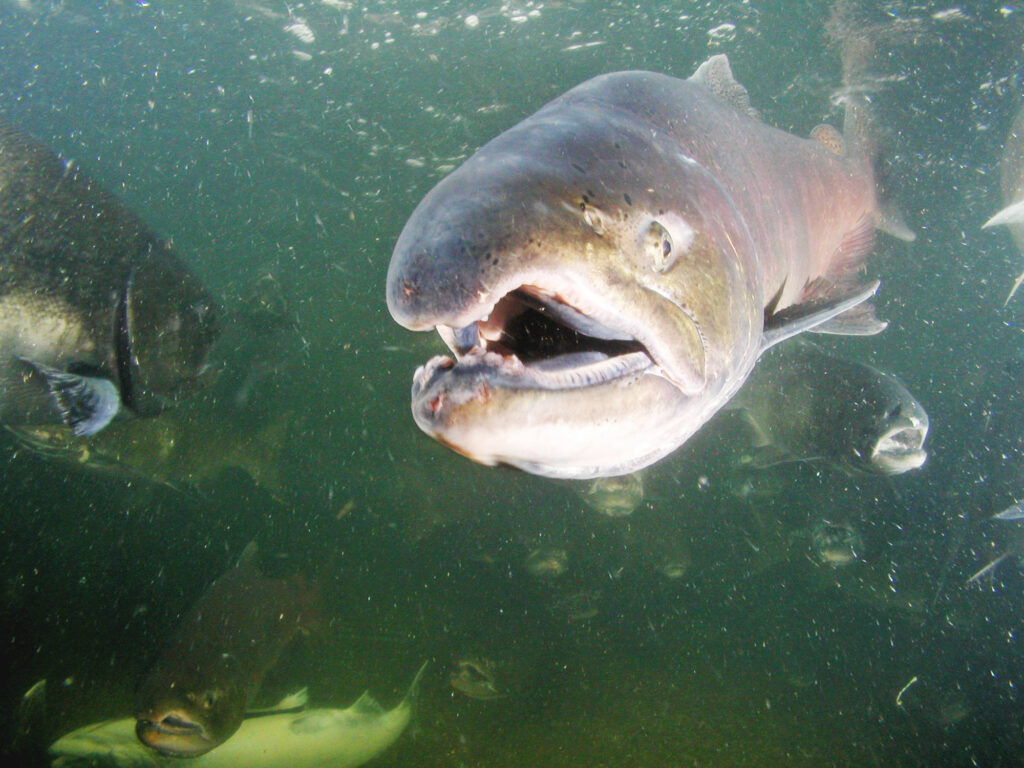
For foragers, the islands are a buffet—but caution and knowledge are essential. Wild blueberries and salmonberries ripen in midsummer, especially around Tlell and Masset. Chanterelle mushrooms are found in the forests near Naikoon in late summer and fall. If you’re by the coast, you might spot oysters or mussels clinging to the rocks—but these require care due to red tide warnings. Never eat anything unless you’re sure it’s safe, and consider bringing a field guide or taking a local foraging tour if it’s your first time.
Stargazing & Night Photography
Because of Haida Gwaii’s distance from city lights, the night skies are some of the clearest in British Columbia. On a good night, especially in fall and winter, you might see the Milky Way streaked overhead, or even catch the northern lights dancing faintly above the trees. North Beach and Rose Spit are especially good for stargazing thanks to their wide-open skies and lack of light pollution.
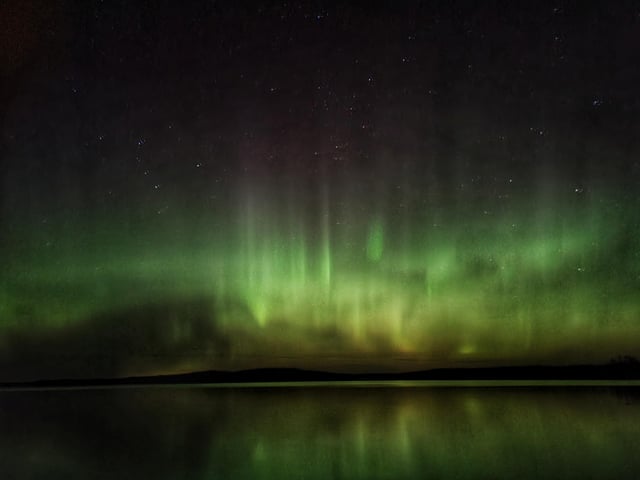
If you’re into night photography, bring a tripod and wide-angle lens. The moon rising over the ocean, silhouettes of driftwood, and glowing tents under the stars all make for incredible shots. Be sure to keep your flashlight red-filtered to preserve your night vision and avoid disturbing wildlife.
Camping Tips & Essentials
Permits & Fees
Before heading out, make sure you’re clear on what’s required for where you plan to camp. For Gwaii Haanas, you must book in advance and attend a mandatory orientation session. This includes a cultural and environmental briefing, often led by Haida Watchmen or Parks Canada staff. Permits are limited, especially for kayaking routes and overnight stays at protected sites, so it’s best to plan months ahead if you’re going in peak season (July–August).
For Naikoon Provincial Park, including Tow Hill and Misty Meadows campgrounds, you don’t need a reservation—it’s first-come, first-served—but there is a small nightly fee paid through BC Parks. Some remote areas like Rose Spit allow free backcountry camping, but you must follow provincial backcountry rules. Always double-check fire bans and site-specific rules before arriving.
Gear Checklist
Camping on Haida Gwaii means being ready for all kinds of weather and terrain. Here’s a list of must-haves:
- Four-season or sturdy three-season tent: The wind off the ocean can be relentless, especially near the coast. Bring extra stakes and guylines to keep your tent secure.
- Waterproof rainfly and ground tarp: Expect wet ground and fog-dripping trees even when it’s not raining.
- Rain gear: A full rain jacket and rain pants are essential. Skip the umbrella—coastal wind makes it useless.
- Layered clothing: Think base layer (merino or synthetic), warm mid-layer (fleece or wool), and an outer shell. Nights are chilly even in summer.
- Warm sleeping bag: Temperatures can drop below 10°C even in July. A 0°C rated bag is a smart choice.
- Camp stove and cooking kit: Fires may be banned or impractical in wet weather. A small gas stove works well; bring wind protection if cooking on beaches.
- First-aid kit: Include blister care, anti-itch cream (for insect bites), and medications.
- Bear-safe food storage: Use bear canisters or hang food in waterproof bags far from your tent. Never leave scraps or wrappers out.
- Water filtration: Water from streams and lakes must be treated. A pump filter, UV pen, or purification tablets all work.
- Dry bags and waterproof containers: Even short hikes can soak your gear. Keep electronics and food dry.
- Headlamp or flashlight: With extra batteries. Some sites are pitch dark by 9 pm.
- Offline maps/GPS: Cell signal is spotty or nonexistent. Download maps and bring a compass as backup.
Weather Awareness
Weather on Haida Gwaii changes fast. You can wake up in fog, walk through light rain, and end the day in sunshine—all within a few hours. Wind is almost constant along the coast and can make even mild conditions feel cold. Always check the marine and weather forecasts before heading out, especially if kayaking or hiking long distances.
Dress in layers and always have a dry set of clothes stored in a sealed bag. If you’re hiking, be cautious of stream crossings after heavy rain, as water levels rise quickly. At night, temperatures often dip below what you’d expect for summer, especially inland or near the beach.
Wildlife Safety & Etiquette
Black bears are found on Graham Island and occasionally in areas near campsites. While sightings are rare, you should always treat your food and garbage with care. Use bear-proof storage or hang food at least 100 feet from your tent, 10 feet off the ground, and 4 feet from the nearest tree trunk.
Do not feed wildlife—this includes birds, small mammals, and especially bears. Even a granola crumb can encourage unwanted behavior. When hiking, talk or sing to avoid surprising animals, and keep dogs leashed at all times.
Give all animals plenty of space, especially nesting birds and seals on the beach. Use binoculars or a zoom lens rather than getting close.
Leave No Trace
Haida Gwaii is remote, pristine, and sacred to the Haida people. Campers should leave no visible impact. That means:
- Pack out all garbage, even food scraps and toilet paper.
- Dig catholes at least 60 meters from any water source and cover them properly.
- Camp 30 meters away from streams, lakes, and beaches, even if it’s tempting to pitch right on the sand.
- Avoid trampling vegetation or cutting branches for firewood.
- Stick to existing trails and campsites when possible, especially in sensitive ecosystems like bogs or dunes.
This isn’t a place for shortcuts—respecting the land keeps it open for others and honors its cultural significance.
Camping Haida Gwaii FAQs
- When is the best time to go to Haida Gwaii?
Summer (July–August) is warmest and driest, but spring and fall offer solitude—with cooler, wetter conditions. - Can I book sites ahead in Haida Gwaii?
Yes—Naikoon and Tow Hill require reservations in summer. Gwaii Haanas often needs a permit. - Is cell service available in Haida Gwaii?
Limited to none. Plan for offline maps, safety devices, and let someone know your plan. - Are campfires allowed in Haida Gwaii?
Usually yes, unless bans are in place. Many sites are driftwood-friendly. Bring a camp stove as backup. - Is Haida Gwaii good for families?
Yes—easy campsites, gentle hikes, beach fun. Just come prepared for weather and rugged beach terrain.
Content creator and writer for multiple websites including All About Glamping, Fit Living Lifestyle, and Live Dream Discover. A full-time traveler who has spoken at various travel conferences around the world.

